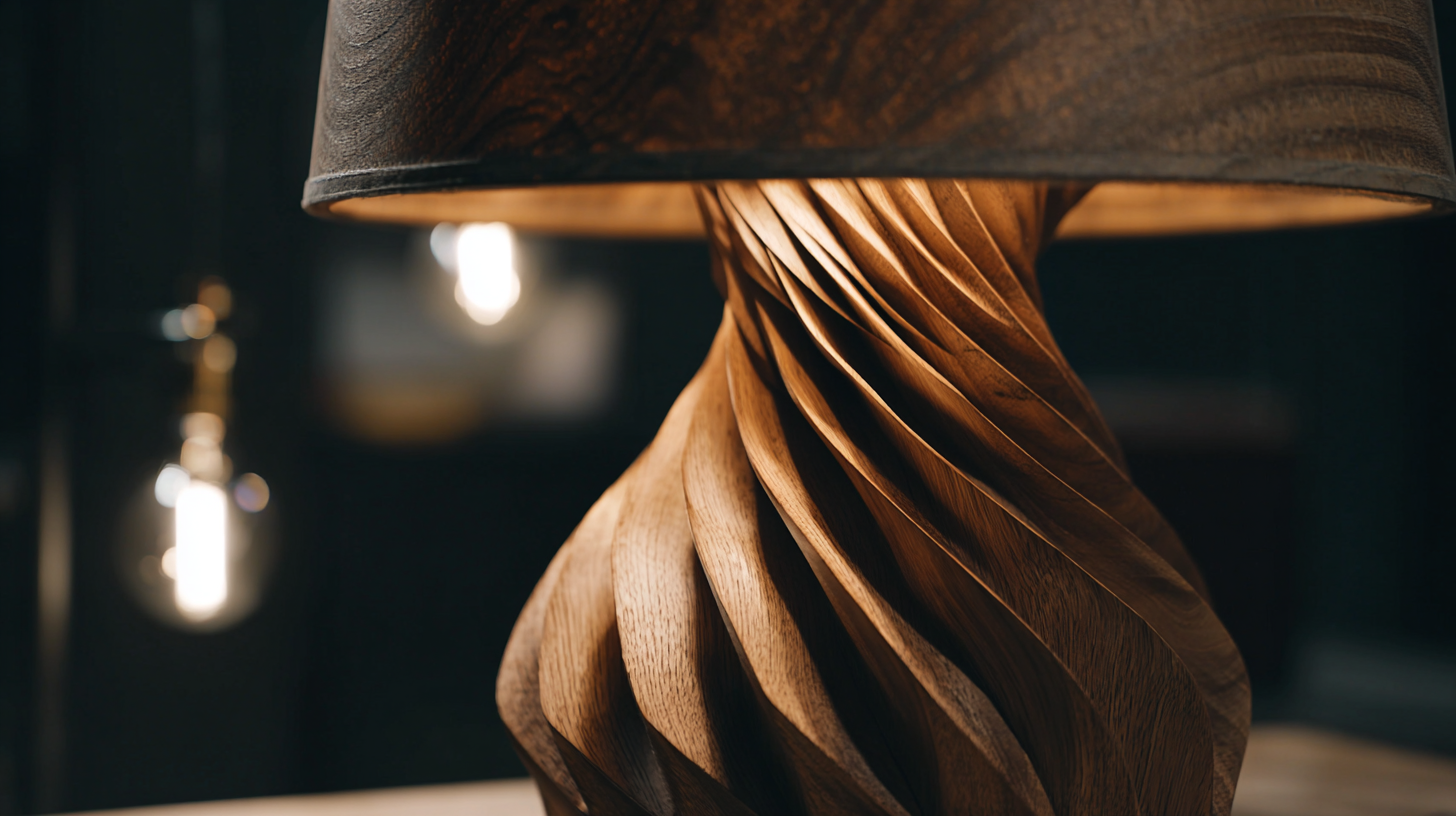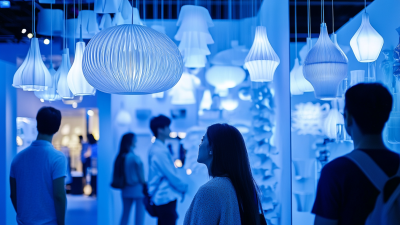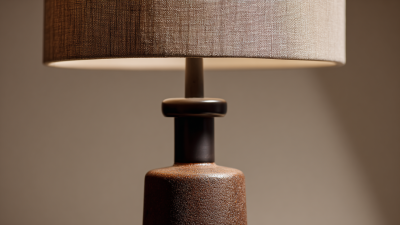In the world of lighting design, the significance of selecting the right materials for lamp creation is paramount. According to a recent market research report by Grand View Research, the global lighting market was valued at over $110 billion in 2020, with a projected compound annual growth rate (CAGR) of 6.5% over the next few years. Within this extensive industry, the choice of lamp materials plays a crucial role not only in aesthetics but also in functionality and sustainability. From metals and glass to innovative composites and biodegradable options, understanding the properties and applications of various lamp materials can significantly enhance both design and performance. This blog aims to provide a comprehensive checklist of lamp materials that every designer should consider, ensuring that your next project stands out and meets modern standards of quality and eco-friendliness.

When selecting materials for lamp creation, understanding the properties and uses of each type is essential for achieving optimal performance and aesthetic appeal. Key lamp materials include metals, glass, ceramics, plastics, and wood, each exhibiting unique characteristics. For instance, metals such as aluminum and brass provide durability and an industrial look, while glass can offer transparency and elegance, allowing for intricate designs. The thermal and light transmission properties of these materials are critical; glass typically allows for higher light transmittance, making it a popular choice for lamps requiring brightness.
Recent industry reports have highlighted that the choice of materials significantly impacts energy efficiency and heat management in lighting applications. For example, semiconductor materials used in LED production exhibit varying electron and hole transport properties, essential for improving the efficiency of solar cells and electronic devices. Furthermore, understanding the thermal conductivity of materials helps in ensuring longevity and consistent performance of lamps under different conditions. This comprehensive approach to selecting lamp materials can elevate the design and functionality of any lighting project, aligning with industry standards and user expectations.

When embarking on a lamp-making project, one of the crucial decisions you'll face is the choice between natural and synthetic materials. Natural materials, such as wood, glass, and ceramics, offer a timeless aesthetic and can bring warmth to any space. Wood, with its unique grain patterns, adds character and a rustic charm, while handcrafted ceramics can provide artistic flair and individuality. These materials not only enhance the visual appeal of your lamp but may also be more environmentally friendly, especially when sourced sustainably.

In contrast, synthetic materials like acrylic, plastic, and metal present their own set of advantages. They often come in a wide variety of colors and shapes, providing flexibility in design. Additionally, synthetic materials can be more durable and resistant to wear and tear, making them suitable for high-traffic areas. For example, acrylic shades can mimic the look of glass but at a fraction of the weight and cost. Ultimately, the choice between natural and synthetic will depend on your design goals, budget, and the desired ambiance of your project. Balancing these factors will help you create a lamp that not only illuminates but also complements your space beautifully.
When embarking on a lamp project, durability and maintenance should be at the forefront of your material selection process. Various materials offer distinct advantages and drawbacks in terms of longevity and upkeep.
For instance, metals like aluminum and stainless steel are highly durable and can withstand wear and tear, making them excellent choices for fixtures that are frequently handled. On the other hand, metals may require periodic polishing to maintain their shine, especially in humid environments.
In contrast, materials such as wood and glass provide a different aesthetic but often require more attentive care. While wooden lamps can add a warm, inviting look, they might not fare well in moist conditions unless treated properly. Glass, while elegant, is prone to breakage and often needs gentle cleaning to avoid scratches.
Moreover, it's essential to consider finishes and coatings that enhance durability; for instance, powder-coated metals can resist rust and fading, extending the product’s life and reducing maintenance efforts. Thus, understanding the specific needs of your lamp project will guide you in selecting materials that align with both your design goals and practical requirements.
When it comes to lamp design, the choice of materials significantly influences not only functionality but also aesthetic appeal. According to a report by the American Lighting Association, over 70% of consumers consider a lamp’s design as a crucial factor in their purchasing decisions. Materials like glass and metal offer timeless elegance and can set the tone for any room, while wood introduces a warm, organic element that appeals to those seeking a more rustic or minimalistic vibe.
Furthermore, emerging trends in sustainable design are reshaping material usage in lamp manufacturing. A study from the International Institute of Sustainable Design highlighted that eco-friendly materials not only boost aesthetic value but also enhance marketability. Consumers are increasingly drawn to lamps made from recycled or upcycled materials, demonstrating that a commitment to sustainability can enhance the overall allure of a product. In this evolving landscape, designers must carefully curate their material choices to cater to both the visual and ethical preferences of consumers.
When embarking on a lamp project, understanding the cost-effectiveness of your material selections is crucial. According to a report from the American Lighting Association, up to 30% of the total budget for lighting fixtures can be attributed to materials alone. Therefore, being strategic in your choices can significantly impact project costs without compromising quality.
For instance, while metals like brass and steel are durable and stylish, they also come at a premium. Consider alternative options such as high-quality plastics or eco-friendly composites, which can reduce material costs by up to 50%, as highlighted in a survey by the International Association of Lighting Designers. Additionally, utilizing locally sourced materials can also lower shipping expenses, further enhancing your project's budget efficiency.
When budgeting, it's essential to balance aesthetic appeal with functionality and longevity. Choosing materials that offer a good return on investment will enhance the overall value of your lamp designs. A well-researched material checklist can streamline your options and prevent unexpected expenses, allowing you to allocate funds more wisely across the entire project.






